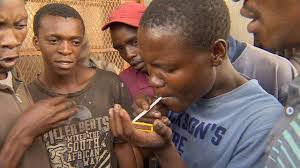By Abdulrasaq Kamaldeen

Drug abuse has become a pervasive issue that afflicts individuals of all ages and genders, and it’s a global problem experienced by many countries. However, the extent and nature of this problem can vary from one region to another. The abuse of drugs, especially among adolescents aged 10 to 17, has seen a consistent increase. This trend can be attributed to factors such as curiosity, lack of parental guidance, and peer pressure.
Despite the well-documented negative consequences of drug abuse, adolescents continue to be at risk. Some of them may turn to drugs as a means to cope with psychological distress or mental anxiety. The current prevalence of drug and substance abuse has led to a loss of self-awareness among society’s members, resulting in mental disorders, addiction, and even death.
As of October 25, 2022, a report from the United Nations Office on Drug and Crime revealed that 14.4% (14.3 million) of people aged 15 to 64 in Nigeria were abusing drugs. Globally, the UNODC World Drug Report noted that over 296 million people used drugs in 2021, representing a 23% increase over the previous decade. The number of people suffering from drug use disorders also rose dramatically, reaching 39.5 million, a 45% increase over the same period.
The rate at which adolescents abuse drugs is alarming, bringing to mind the story of a 15-year-old boy I encountered in one of Sokoto’s largest markets. The incident unfolded as follows: “Around 10 am at Hajiya Halima Market, a bustling marketplace in Sokoto, a 15-year-old boy, visibly disheveled and unstable, suddenly emerged. His face was drenched in sweat, and he wore tattered clothing, yet he seemed singularly focused on his mission.
In the blink of an eye, he handed N30 to a vendor, signaling his intention to purchase something. What was the N30 for? Kuli or Garri? No, he intended to spend it on purchasing cigarettes, known as ‘Cancer sticks,’ to fill his lungs with smoke. The vendor quickly realized his intent and publicly handed him a cigarette. A single cigarette didn’t satisfy his craving, and he managed to obtain another.
As he spoke, his words were incoherent, revealing the grip of addiction—remarkable for a boy of his age. His appearance was indicative of a child who had been neglected by his parents. The absence of parental guidance had driven him to self-destructive behavior, leaving him feeling lonely, neglected, and vulnerable.”
Many of these early drug abusers may have fallen prey to a lack of parental guidance, peer pressure, negative role modeling by teachers, and the presence of bars and small shops near schools where drugs are traded clandestinely.
To address this persistent issue in society, it is imperative for teachers and parents to work collaboratively. Additionally, government authorities should enforce stringent laws and provide effective oversight to reduce the prevalence of drug abuse in our communities and educational institutions. Moreover, the government should extend a helping hand to neglected children by offering free education, mentorship, and guardianship, ensuring that they have the support and protection they need to build a brighter future.
